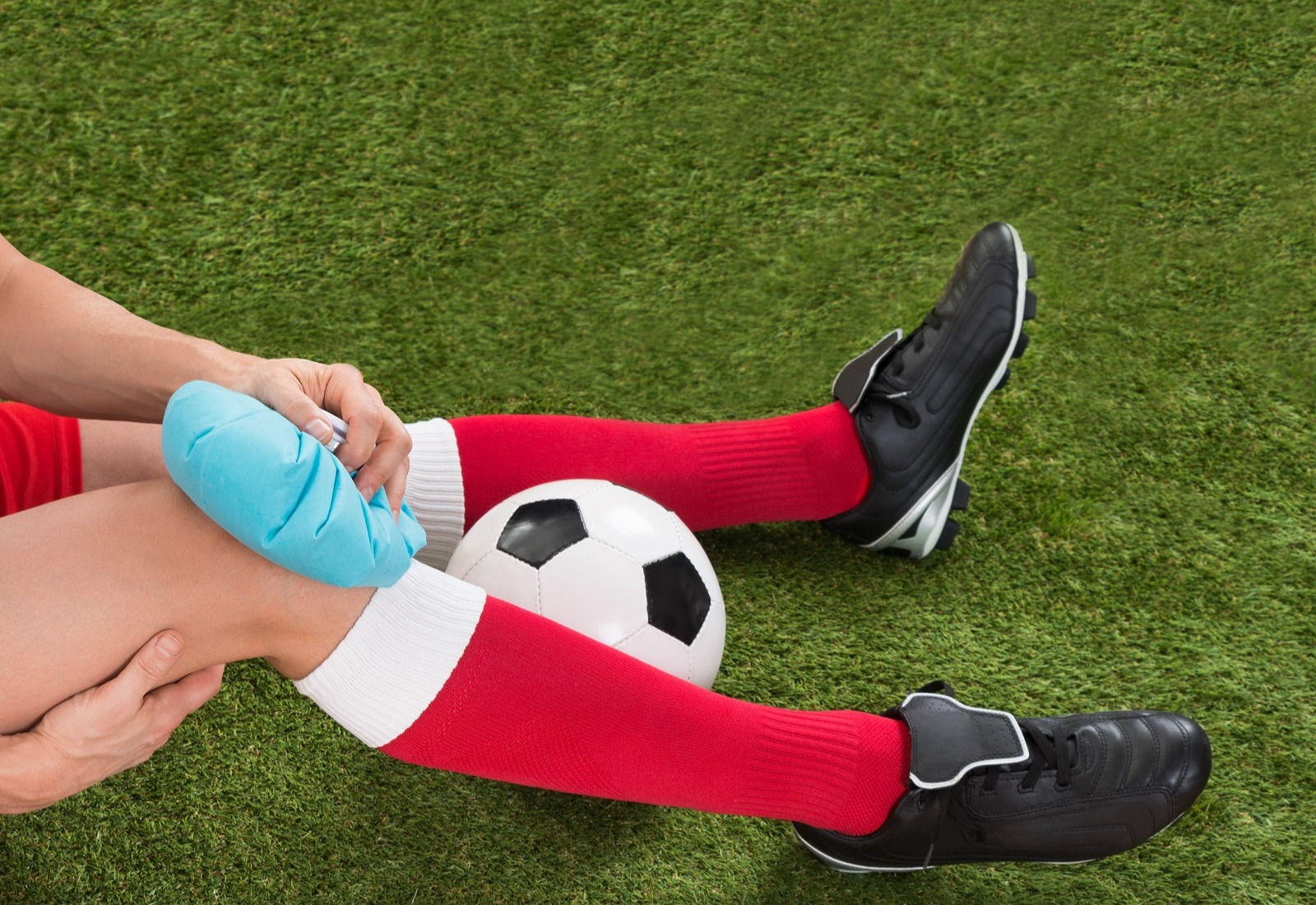Pertolongan Pertama pada Cedera Olahraga, Kunci Penting Pemulihan
By Tim RS Pondok Indah
Pertolongan pertama cedera olahraga: istirahatkan area cedera, kompres es, tekan lembut (balut), dan angkat bagian yang cedera untuk mengurangi bengkak.

Gaya hidup sehat dijalankan dengan sejumlah kebiasaan baik, salah satunya berolahraga rutin. Apalagi sejak pandemi, olahraga menjadi tren di berbagai kalangan. Mulai dari lari sampai golf, bersepeda sampai tenis, semuanya mendapat penggemar baru.
Selain gerakan yang dilakukan, faktor risiko cedera juga perlu mendapatkan perhatian khusus saat berolahraga. Faktor penyebab cedera olahraga dapat dibagi dua, eksternal dan internal. Eksternal termasuk kondisi lapangan atau jalan yang tidak rata atau licin.
Namun, penyebab yang dominan justru adalah internal, seperti kurang pemanasan dan pendinginan, kondisi fisik yang sudah lelah tetapi masih dipaksa olahraga, program latihan terlalu berat, dan kondisi cedera sebelumnya yang belum ditangani dengan tuntas. Faktor-faktor ini pun sebenarnya dapat dihindari.
Pertolongan Pertama Cedera Olahraga
Apabila Anda merasakan nyeri di tengah aktivitas olahraga, segera hentikan kegiatan dan lakukan pertolongan pertama pada cedera olahraga. Yang terpenting dan perlu diingat, sebaiknya tidak ke tukang urut ketika terjadi cedera olahraga. Sebab saat cedera, ada jaringan tubuh yang rusak, meradang, atau mengalami cedera. Mengurut atau memijat daerah tersebut justru dapat memperparah cedera yang terjadi.
Cedera olahraga terbagi dalam empat derajat dan membutuhkan penanganan yang berbeda. Berikut ini adalah penjelasannya.
Cedera Olahraga Derajat Satu
Cedera olahraga yang dikategorikan sebagai jenis cedera derajat satu berupa nyeri, otot tertarik, tidak bengkak, dan tidak ada yang robek. Pada tahapan ini cedera olahraga terbilang ringan dan biasanya dapat diatasi dengan penanganan mandiri menggunakan teknik PRICE (Protect, Rest, Ice, Compress, Elevate).
- Protect atau melindungi area tubuh yang cedera untuk mencegah perparahan kondisi.
- Rest atau mengistirahatkan bagian otot yang cedera.
- Ice atau melakukan kompres dingin pada area yang mengalami cedera.
- Compression bisa dilakukan dengan membebat area yang cedera menggunakan perban elastis.
- Elevation atau meninggikan posisi bagian tubuh yang cedera.
Baca juga: Awas, Cedera Otot Tidak Selalu karena Olahraga
Cedera Olahraga Derajat Dua
Dalam kategori derajat dua, cedera olahraga berupa robekan atau kerusakan kecil pada jaringan. Biasanya, area tubuh yang cedera masih dapat bergerak, tetapi terasa nyeri. Pertolongan pertama pada cedera olahraga derajat dua masih dapat dilakukan dengan teknik PRICE (Protect, Rest, Ice, Compress, Elevate). Akan tetapi, jika kondisi tidak membaik atau justru bertambah parah, maka Anda disarankan untuk berkonsultasi dengan dokter spesialis kedokteran olahraga.
Cedera Olahraga Derajat Tiga dan Empat
Derajat tiga dan empat terdapat robekan otot, putus ligamen, bahkan patah tulang. Biasanya gejala cedera olahraga pada tahap ini dapat langsung dilihat dan dirasakan. Apabila Anda mengalami cedera olahraga derajat tiga atau empat, segera hentikan aktivitas olahraga dan pergi ke rumah sakit untuk menerima penanganan medis. Anda juga disarankan untuk menerapkan teknik PRICE sepanjang perjalanan ke rumah sakit.
Ketika bertemu dengan dokter di Emergency RS Pondok Indah, pasien akan mendapatkan pemeriksaan TOTAPS: Talk (untuk mengetahui mekanisme cedera), Observe (melihat apakah ada dislokasi, retak, dan lainnya), Touch (pemeriksaan fisik), Active movement (pasien mencoba menggerakkan sendinya sendiri), Passive movement (dokter mencoba menggerakkan sendi pasien), dan Skill test (tes apakah ligamen atau tendon ada yang robek, dan lain-lain).
Diagnosis yang tepat adalah kunci penanganan cedera, khususnya bagi atlet. Dengan diagnosis dan penanganan yang tepat, kondisi psikis pasien yang berperan penting dalam proses pemulihan pun dapat ikut terjaga.
Baca juga: Mengenal Cedera Engkel, Penyebab Serta Cara Menanganinya
Diagnosis Cedera Fisik
Dalam penanganan cedera olahraga di RS Pondok Indah, tim medis akan fokus mengembalikan empat hal berikut:
1. Anatomical
Mengembalikan bentuk anatomi tubuh. Apabila ada otot yang robek akan dioperasi untuk menyambung kembali ototnya. Apabila ada ligamen yang rusak, akan diganti ligamennya.
2. Rehabilitation/Recovery
Mengembalikan fungsi: menekuk lurus maksimal dan mengembalikan kekuatan otot seperti semula.
3. Performa
Mengembalikan performa: pasien dapat kembali melompat, lari, sprint, dan lain-lain.
4. Kualitas
Memerhatikan kualitas gerakan pasien apakah sudah baik atau belum. Ketika mengalami cedera, Anda dapat langsung ke Emergency (IGD), terutama bila kondisinya akut, sangat sakit, dan area yang cedera tidak dapat digerakkan. Namun, jika cedera masih dapat ditoleransi, Anda dapat mengunjungi Sport Medicine Injury and Recovery Center atau Orthopedic Center RS Pondok Indah - Bintaro Jaya, untuk dapat ditangani oleh dokter sesuai kondisi Anda.
FAQ
Bagaimana Cara Mencegah Cedera Saat Berolahraga?
Untuk mencegah cedera saat berolahraga, pastikan untuk pemanasan dan pendinginan sebelum dan setelah latihan. Gunakan perlengkapan yang sesuai dan lakukan latihan dengan teknik yang benar. Jaga kebugaran tubuh secara keseluruhan dan hindari berolahraga berlebihan untuk mengurangi risiko cedera.
Apa yang Harus Dilakukan Jika Terjadi Cedera Ringan?
Jika terjadi cedera ringan, segera lakukan langkah RICE: Rest (istirahatkan area yang cedera), Ice (kompres dengan es untuk mengurangi pembengkakan), Compression (beri perban elastis), dan Elevation (angkat area cedera). Jika rasa sakit atau pembengkakan berlanjut, periksakan lebih lanjut ke dokter.
Cedera Olahraga Manakah yang Memerlukan Perhatian Medis Segera?
Cedera olahraga yang memerlukan perhatian medis segera termasuk patah tulang, dislokasi, cedera kepala atau leher, pendarahan hebat, atau pembengkakan yang sangat parah. Jika ada kesulitan bergerak, mati rasa, atau rasa sakit yang tak tertahankan, segera ke IGD rumah sakit terdekat untuk penanganan lebih lanjut.